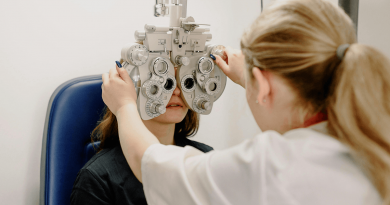Bacteriophages: antibiotic resistant tuberculosis’ worst nightmare

This is the second of two posts from participants in Baylor College of Medicine’s National School of Tropical Medicine Summer Institute program with Baylor University. View the first post here.
In the shadow of the COVID-19 pandemic, another silent killer, tuberculosis (TB), loomed. Surprisingly, TB remains the leading cause of death from an infectious disease worldwide despite the advances in modern medicine. Multi-drug resistant tuberculosis (MDR-TB), as named by the Centers for Disease Control, indicates strains of TB resistant to at least one of the critical antimicrobial agents against TB, isoniazid or rifampin. MDR-TB has emerged as a global health crisis, with 450,000 people contracting and 190,000 people losing their lives to MDR-TB annually. Unfortunately, we can expect fatality rates from MDR-TB to increase without combatting antibiotic resistance.
Antibiotic resistance isn’t limited to tuberculosis; it’s a growing concern across various bacterial infections, posing a significant threat to global health. Bacteria are simple unicellular organisms that possess remarkable evolutionary mechanisms that enable them to adapt and survive standard antibiotic treatment regimens. Unfortunately, the misuse and overuse of standard antibiotic treatment regimens have accelerated the development of bacteria resistance, according to the World Health Organization. Addressing this challenge demands a long-term solution that goes beyond conventional antibiotics.
Bacteriophages, commonly known as phages, are viruses that target specific bacteria and occur naturally in environments where bacteria are present. More specifically, lytic phages use the bacterial cell as their assembly factory to express virulent genes, leading to bacterial lysis and release of phage progeny to reduce infection. Unlike antibiotics, which broadly target bacteria, phages evolve alongside their bacterial hosts, providing a dynamic and specific means of combating bacterial infections. This natural evolution may offer a more sustainable, cost-effective solution to the identification, development and manufacturing of novel antibiotics to keep up with the ongoing emergence of resistant bacteria. Moreover, phages offer several advantages over antibiotics. They are pathogen-specific, targeting bacteria directly without disrupting the host microbiome. This reduces the likelihood of collateral damage to beneficial host bacteria and potentially minimizes side effects associated with antibiotic use.
Phages have a robust history of therapeutic applications. To date, phages have been used therapeutically to treat urinary tract infections, dysentery, septicemia, typhoid fever and surgical wound infections. One study isolated phages as a potential prebiotic, discovering that an oral phage treatment containing four different bacteriophages successfully reduced colon pain and other abnormal gastric functions. Despite their efficacy in various clinical settings, phages in the United States remain predominantly restricted to emergency cases. For instance, a recent study showcased the successful elimination of P. aeruginosa – a notorious multidrug-resistant pathogen – from a septic patient’s bloodstream using a tailored phage cocktail administered intravenously and topically.
Moreover, phage therapy isn’t just limited to the traditional routes of administration, such as topical and intravenous delivery. Phage delivery through inhalation also is a promising approach, particularly for respiratory infections such as multidrug-resistant (MDR) tuberculosis. Researchers at Katholieke Universiteit in Belgium have explored the feasibility of using spray-dried phage powders for inhalation, offering a novel method for delivering phages directly to the lungs. While this study used P. aeruginosa and S. aureus strains that commonly infect the lungs of patients with cystic fibrosis, the methods involved in spray-drying phages still need to be studied in other pathogens, including M. tuberculosis. Adapting spray-drying methods to encapsulate phages specific to MDR-TB may unlock new possibilities for combating this challenging infection.
Prophylactic use of phage therapy also holds promise in preventing MDR-TB. Researchers assessed the effectiveness of mycobacteriophage D29 as a prophylaxis treatment for TB using a mouse model of tuberculosis. Mycobacteriophage D29 has a remarkable 95% effectiveness against M. tuberculosis and has been shown to be successfully administered via a nose-only inhalation device. Mice treated with mycobacteriophage D29 before infection showed a significant reduction in bacterial load lasting at least three weeks, suggesting a potential role in tuberculosis prevention. Furthermore, the use of a nasal device not only offers a convenient alternative for administering phage treatment but also holds appeal for children who may find swallowing pills challenging. Additionally, in this study, only one dose of phage treatment was required, making it more convenient. The potential for phage treatment to act as a preventative measure underscores the urgent need to research the use phage therapy for MDR-TB further.
In the ongoing battle against antibiotic resistance, phage therapy emerges as a powerful ally, offering a multifaceted approach to combatting dangerous infectious agents like tuberculosis. These bacteria-fighting machines can be administered in various ways and have been successful in humans to date. As scientists make progress on tuberculosis phage treatment, it is crucial to investigate other phage models that can combat other antibiotic-resistant bacteria. While phage therapy is not perfect, it is a step in the right direction for developing a long-term solution to resistance that can complement antibiotics or prevent infection in the first place.
By Chloe Kautt



